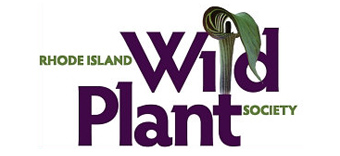In her recent article in EcoRI, Welcome to the Native Jungle, Where Local Birds and Bees Thrive, RIWPS member Anne Raver, writes about why she chooses to plant natives. Anne, a Warren, R.I., resident and longtime gardener, has written about landscape and the environment for more than 30 years.
May 26
When you stop thinking about plants as pretty outdoor furniture on a green rug, and see them as complex organisms that feed thousands of beneficial insects, birds and mammals, your garden becomes another universe.
My husband and I moved up from an old farm property in Maryland to a sunny corner lot in the middle of Warren, R.I., a few years ago, and decided to devote most of the space to a large kitchen garden, surrounded by plants that would feed and shelter wildlife.
We kept some of the old plants that were here: a gnarled cedar tree, purple lilacs, a magnolia, and two purple smoke trees that edged the yard, as well as the horse chestnut and craggy catalpa near the house.
But we took out almost everything else: a couple of Japanese maples and peonies, German irises, hybrid tea roses, burning bushes, and a severely clipped row of yews alongside the house.
We dug up a good part of the lawn for our vegetable garden, another swath for prairie flowers such as Joe Pye-weed, ironweed and rudbeckias, and another for what must look like a collection of weeds — goldenrods, little bluestem, river oats, milkweed — and sticks — native viburnums, birch, beach plum, staghorn fern, high bush blueberry — to our neighbors, because they are still too young to look like anything else.
They can’t see what we see in our mind’s eye: these plants as they develop and fill in over the years, providing a lush and beautiful habitat for insects, birds and animals.
It’s easy to get inured to the grim statistics: 95 percent of the wilderness that once lay across the continental United States is now covered with cities and suburbs, 30 million acres of lawn, highways and malls, industrial parks, landfills, and many forms of agriculture.
That leaves just 5 percent for wildlife. No wonder half the bird species of 40 years ago have disappeared. Or that more than one-third of North American birds, 432 species, are at risk of extinction. Read more….





